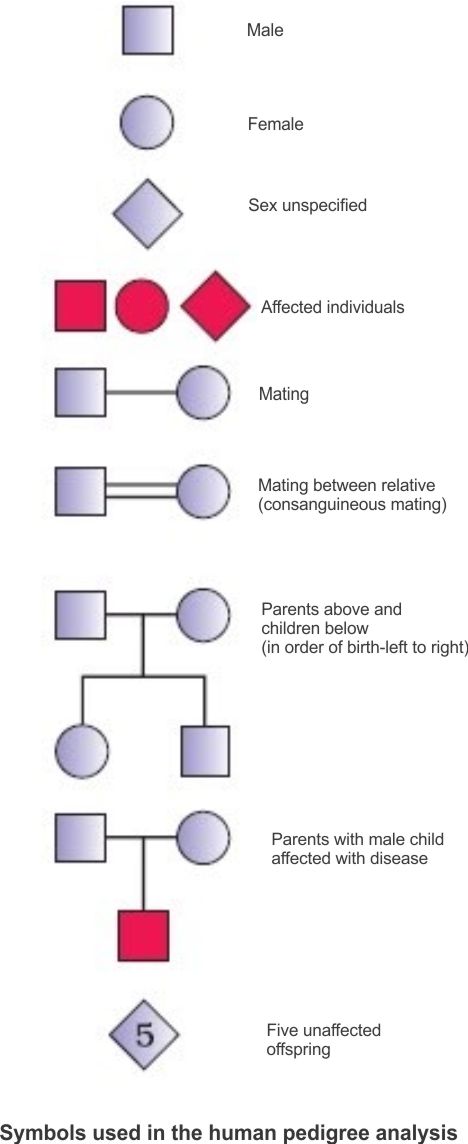Pedigree Studies
- Pedigree studies are a vital tool in human genetics, allowing us to analyze the inheritance patterns of traits and diseases within families over multiple generations.
2. Understanding Genetic Patterns: They reveal whether traits are dominant, recessive, autosomal, or sex-linked, aiding in understanding the genetic basis.
3. Predicting Risk: Pedigrees can predict the likelihood of an individual inheriting a particular condition or passing it on to their offspring.
- Square: Represents a male.
- Circle: Represents a female.
- Shaded: Indicates an affected individual.
- Half-shaded: Suggests a carrier (heterozygous for a recessive trait).
- Horizontal line: Represents a marriage or partnership.
- Double horizontal line: Represents mating between relatives.
- Vertical line stemming from a marriage line: Represents offspring.

1. Autosomal Dominant Inheritance: Affected individuals (shaded) appear in every generation. Usually, affected individuals have at least one affected parent.
- Identifying carriers of genetic diseases.
- Predicting the risk of genetic disorders in offspring.
- Studying patterns of inheritance within families.
- Investigating the genetic basis of complex traits and diseases.